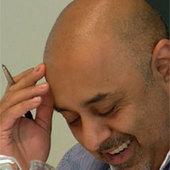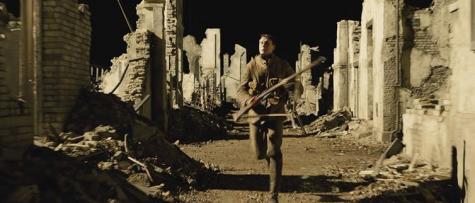Home, workplace, tomb – the reality of the World War II tank
Such an experience of the war was certainly unique. I was once told a story by a World War II veteran who served as a radio operator in one of the British Army tank regiments. As a treat, his son planned to drive him around all the old sites of his war service in Normandy, Holland and Germany. But the veteran said that he would not be able to recognise any of the places as all he ever saw of the terrain was a letterbox sized slit view, always looking straight ahead. Limited views and limited space was what all of those whose served in them had. It was difficult to see the enemy.
This was the irony of serving in a tank. Cut off from the world at war around you, hunkered in an armoured vehicle, yet when you were hit, all you had was a small hatchway between you and incineration. Somewhat like living inside a bomb. This was especially true of the Sherman, the tank that features in Fury – to such an extent that there are stories about Germans calling them “ronsons” after the Ronson lighter – the joke was that they lit up first time.
Those in the tanks did have the advantage over the infantry, but few creature comforts. The crew (four or five or six) would sleep under a waterproof tarpaulin, in a row alongside their tank.
While driving or in battle for hours at a time the conditions inside were almost unbearable. Some of the spent shell casings were used as makeshift bedpans to urinate into and severe constipation was very common.
Conditions inside were also cramped, the crew packed like sardines. The commander would often have his feet on the shoulders of his radio operator, and the loader in the gun turret would basically be sitting on the commander. All were connected by internal radio to hear over the constant racket generated by engine. Endurance and perseverance were the watchwords.
Recruits were generally sourced through conscription. Every few months a new draft of 18 year olds were called into the services. The British main tank-training base was at Bovington in Dorset, where the recruits slept on beds made of straw. During training, they were allocated their main tasks based on rudimentary skills they revealed: radio operator, driver, or gunner. Driving skills were tested through initially driving a truck, gunnery skills with an air-gun that fired at small wooden tank models pulled by string. Not exactly high-tech.
Some hadn’t even been to tank school but were drafted from other regiments. In Fury, Brad Pitt loses his assistant driver, who is replaced by Norman Ellison, a recently enlisted typist who has never seen the inside of a tank before. The rest of the crew have been together since the North African Campaign and are much more hardened to the realities of war.
 The newbie. Sony Pictures
The newbie. Sony Pictures
The tank regiments used in D-Day were made up of such crews, both veterans from the desert campaigns and raw recruits. Stuart Hills was one of them. He commanded a one of the “swimming” tanks that were to accompany the infantry onto Gold Beach. His crew were all 22 and 23 years old, he was 19. His tank did not make it to the beach, sunk by a shell fragment, but his crew survived.
The tank had to be an informal place where rank was forgotten – except in battle – and first names were used. “Trust”, said Hills, was “a key commodity. Tank crews that fell out with each other were much more likely to end up dead”.
In the extreme close quarters of the tank, the interplay between the crew members was incredibly important. Esprit de corps, that intangible quality that kept people together during the horrors and terrors of battle, was crucial in those metal boxes.
When you watch Fury, remember Stuart Hills – and all those who experienced the extraordinary reality of life inside a World War II tank.
Clifford Williamson does not work for, consult to, own shares in or receive funding from any company or organisation that would benefit from this article, and has no relevant affiliations.
This article was originally published on The Conversation. Read the original article.














